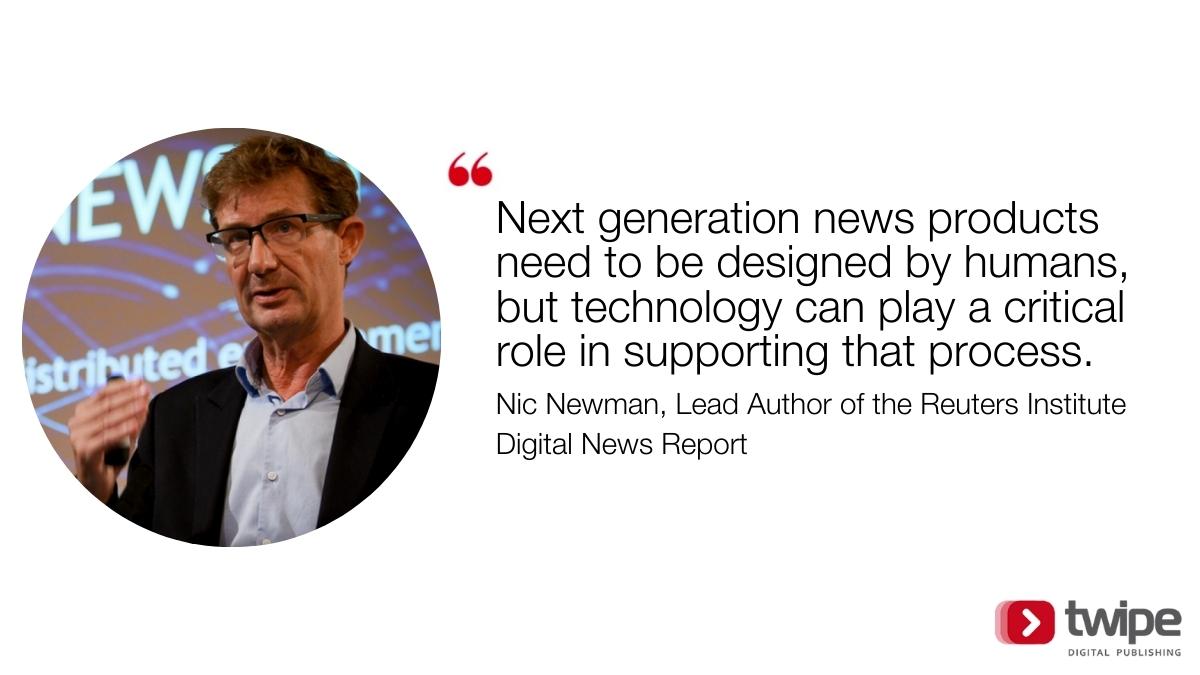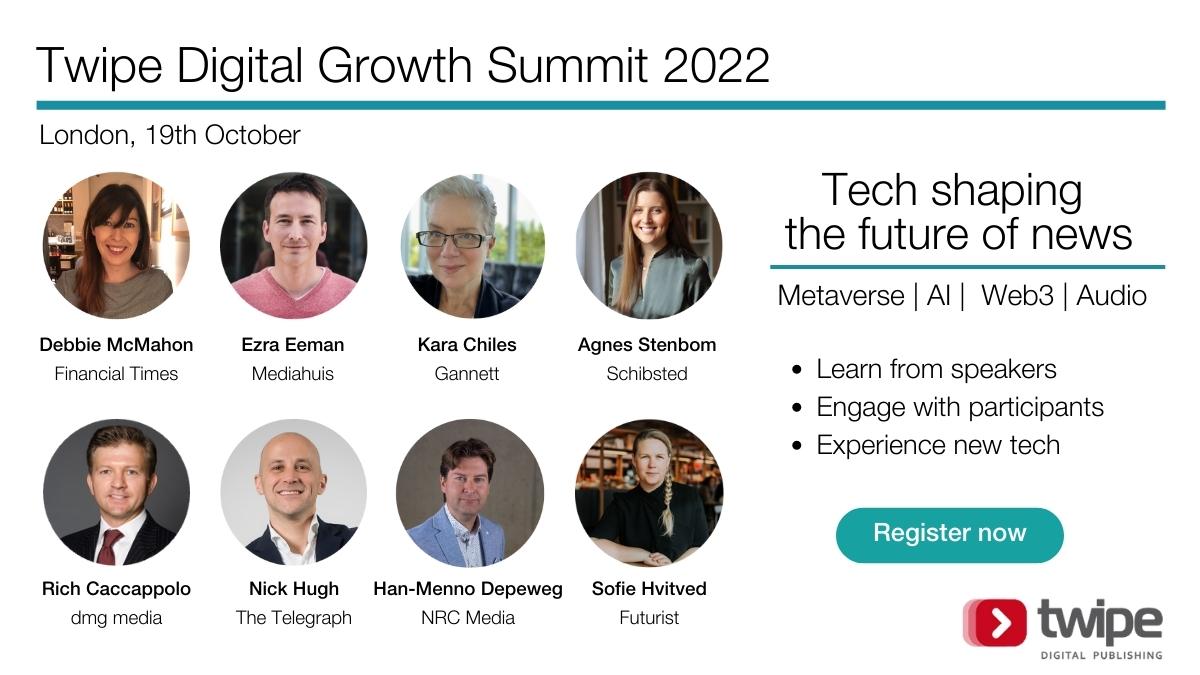Challenges mount for the news industry as consumers turn away from news. How can technology help?

Written by Nic Newman, Lead Author of the Reuters Institute Digital News Report
These are uncertain and unpredictable times – for ordinary people but also for journalists. Russia’s invasion of Ukraine, the cost-of-living crisis – not to mention climate change are all examples of important stories which journalism, at its best, can help us understand and respond to. But we also find that, in the face of a relentless and often depressing agenda, much of the public is turning away from news – or at least selectively avoiding it.
While the majority of people, across countries, remain engaged and use the news regularly, many others are choosing to ration or limit their exposure to certain types of news. In this year’s data we find that the proportion that says they avoid the news, sometimes or often, has almost doubled in the UK (46%) since 2017 and it is a similar story elsewhere. Four in ten feel the news agenda is overly repetitive; more than a third say it is depressing and brings down their mood.

This problem of ‘selective avoidance’ is also linked to the challenge of revenue in two ways. Firstly, people are less likely to pay for a product that makes them sad or depressed – especially at a time when people are watching their finances closely and are more likely to invest in services that might cheer them up.
But secondly, we find growing evidence that younger groups – the next generation of news consumers – are losing connection with traditional brands altogether because the content doesn’t feel relevant to their lives.
Industry reactions to this year’s findings have been mixed. Some have denied there is a problem, pointing to record audiences during the Ukraine crisis and the coverage of the subsequent economic upheavals. But others believe that there is something fundamentally rotten in the news product purveyed by most traditional media companies.
Writing in the Washington Post, journalist Amanda Ripley says the news is not currently designed for humans and needs a rethink. The article suggests that we are not equipped, physiologically or mentally, to be delivered catastrophic and confusing news and pictures, 24/7. Ripley calls for more journalism that gives people a sense of hope as well as a sense of agency, that helps them make a difference – or even get involved in creating solutions.

But does a human approach provide any role for technology to rekindle those brand connections and address the relevance challenge that is that the heart of this issue. At this year’s Digital Growth Summit, I will argue that news products based on innovative technology can help positively reshape news products in three important ways.
Firstly, real time data can help us better understand what audiences are looking for and programme more relevant content. There’s currently a big gap between what audiences want and what they are getting. Previous attempts at personalisation have tended to deliver more of what makes them unhappy; one negative or shocking story after another. But what if we programmed our algorithms to deliver stories of hope and inspiration alongside the important stories that cover difficult issues?
Secondly, we need to embrace new formats that engage younger people at the same time as maintaining the more traditional formats that work best for older groups. Increasingly fragmented consumption across multiple platforms means we will need to get better at this reversioning process. This is a huge challenge for newsroom journalists who are already overstretched, but AI technologies can do some of the heavy lifting by making it easier to create automated bullet point summaries, translate content into different languages or create video or audio content out of text.
Thirdly, we need to build new digital products – beyond website and apps – that inform and entertain audiences in equal measure and help rebuild some of the habits and connections that have been partly lost. Podcasting and longer form video will be critical here because they demonstrably deliver ‘engaged time’ and a deeper connection with hosts, but technology will be needed in helping this content find the right audience. Email news is another example of a relatively simple, curated product that supports frequency, loyalty and habit – and is good for business.
The challenges of relevance and revenue are intertwined. Building long term relationships and consumer value will require looking again at the effect the news has on consumers and society as a whole. Next generation news products need to be designed by humans, but technology can play a critical role in supporting that process and ensuring the right content gets to the right people, in the right format at the right time.
Nic Newman is a Senior Research Associate at the Reuters Institute and is lead author of the Digital News Report. He is also a consultant on digital media and a former head of product and engineering at BBC News.
The full report can be accessed here
Hear more from Nic at the Digital Growth Summit at The Brewery in London 19th October. Buy your ticket here.
Other Blog Posts

Stay on top of the game
Join our community of industry leaders. Get insights, best practices, case studies, and access to our events.
"(Required)" indicates required fields


